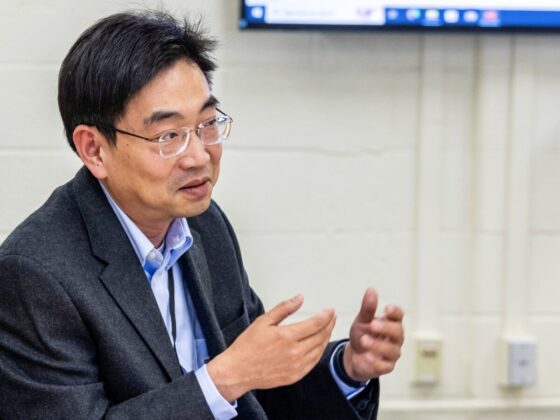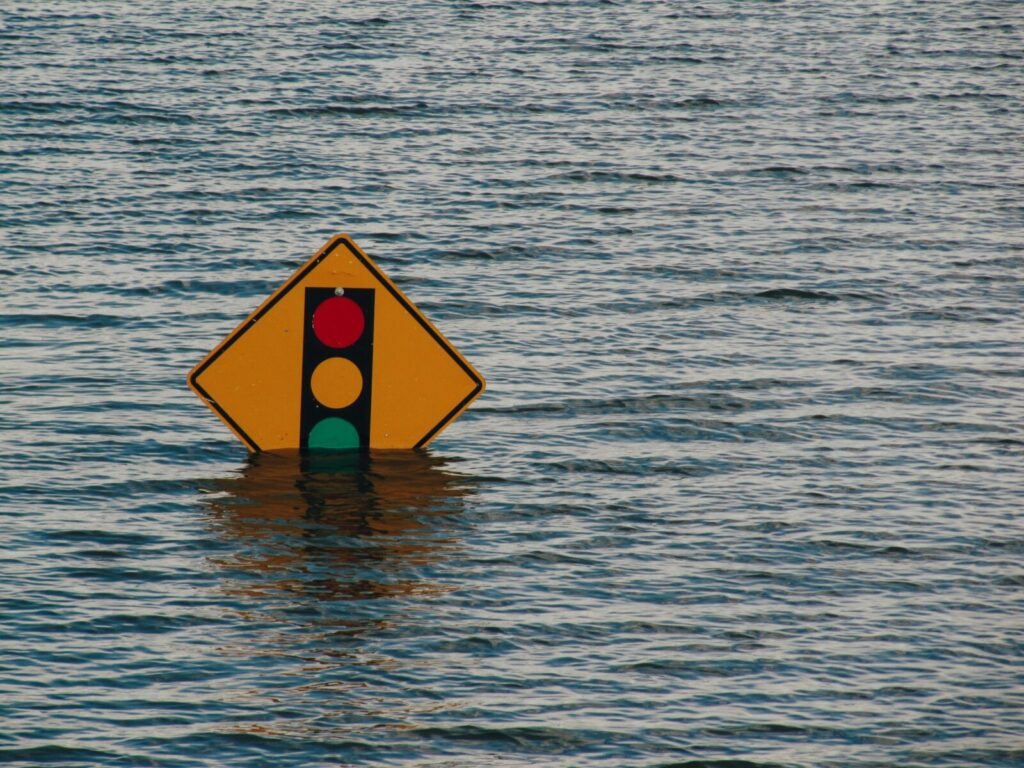News Details
Exploring sustainable development & the human impact of natural disasters

Authored by: Carson Easterly
Photography by: Krista Patton
Faculty & Research
04/23/24
A Q&A with research assistant professor Chenyi Ma
What factors allow people to prepare for and recover from natural disasters? Dr. Chenyi Ma, a research assistant professor at Penn’s School of Social Policy & Practice (SP2), conducts interdisciplinary research that investigates the role of inequality in disasters’ impact and points to policy solutions. Having first come to SP2 as a PhD in Social Welfare student, he now teaches SP2 students while conducting research on disaster risk reduction and sustainable development.
What drew you to SP2 and Penn?
Disaster research requires interdisciplinary collaboration, and Penn is the ideal place. I have mentors at SP2, Wharton, and Engineering and access to rich, multidisciplinary academic resources. SP2’s social justice mission and commitment to sustainable development also align with my values.
Twelve years ago, I came to SP2 as a student in the PhD in Social Welfare Program. I continued my research on the human impacts of natural disasters as a post-doctoral student. Now, as a research assistant professor at SP2, I focus on the social determinants of health and behavioral outcomes in disaster contexts, including public health emergencies like the COVID-19 pandemic.
Before joining Penn, you worked as a program officer for Education for Sustainable Development at the World Wide Fund for Nature (WWF). How does that background connect to your research and teaching?
My work at WWF focused on promoting a holistic approach known as Education for Sustainable Development (ESD). With a student-centered learning approach similar to social work education, ESD empowers individuals with the knowledge, skills, values, and attitudes needed to make informed decisions and take responsible actions for environmental integrity, economic viability, and a just society. ESD also encourages researchers to employ Community-Based Participatory Action Research (CBPAR) — a collaborative research approach that involves community members — to foster both researchers’ and community members’ knowledge and ability to sustainably manage their local natural resources while respecting, and even sometimes using, indigenous culture, knowledge, and social infrastructure. Student-centered teaching and collaborative research continue to be important themes of my work.
How would you define sustainable development?
Sustainable development is about meeting present needs without compromising the ability of future generations to meet theirs. This approach encompasses social, economic, and political dimensions. My current research delves into the social dimension, recognizing that addressing environmental challenges requires collaboration and co-learning among natural and social scientists, professionals, and stakeholders to find solutions.
You currently research social vulnerability and disaster preparedness, housing and urban resilience, environmental justice, energy policy, and social epidemiology. What drew you to these research interests?
One of the most important components of sustainable development is disaster risk reduction. As a student at Washington University’s Master of Social Work program and SP2’s PhD program, I began to think of questions about the people affected by disaster risk — for instance, who is more likely to suffer from damage as a result of natural disasters? Which survivors of disasters are more susceptible to mental illness? Do existing social policy programs adequately address the needs of disaster victims?
To answer these questions and others, I began to conduct empirical research. For example, using large datasets and GIS mapping, I led a project that examined the severity of home damage caused by Hurricane Maria in Puerto Rico. Homes occupied by renters were four times more likely to have been destroyed than those occupied by homeowners. This is direct evidence that low-income renters are extremely socially vulnerable to housing damage caused by climate-related disasters.
Through another study, I found there were racial and ethnic disparities in the prevalence of mental illness among Hurricane Sandy survivors in New Jersey and New York City. Such disparities, largely accounted for by different levels of exposure to a disaster, underscore the need for increased provision of social support to more susceptible groups to effectively mitigate these risks.

What kind of an impact do you hope your work can have on policy in the face of climate inequality?
I hope policymakers might consider public-private partnerships like the National Flood Insurance Program to address private insurance affordability for low-income households who are most vulnerable to housing damage. One of my recent research studies examined how income inequality could influence household consumption behaviors related to disaster preparedness, with a specific focus on private homeowners’ insurance. Observing Hurricane Maria survivors in Puerto Rico, the study found that private homeowners’ insurance — the most important financial tool to mitigate property losses — was unaffordable for low-income households, and income inequality further exacerbated this unaffordability.
Another of my current studies provides new insight into how public assistance, such as cash transfer welfare programs, can effectively address vulnerable groups who have a high level of risk perception and the intention to prepare for disasters, yet lack the financial resources to do so. The study examines the progress of human behavioral changes for disaster preparedness along three developmental stages, from “not prepared,” to “have the intention to prepare,” and ultimately to “already prepared.” The preliminary findings of this study suggest disparities between Hispanics and non-Hispanic whites. While Hispanics are more likely to have the intention to prepare and exhibit higher levels of risk perception than non-Hispanic whites, they are less likely to take concrete actions of preparedness. This is largely due to the unequal access to preparedness resources between the two groups.
You’ve taught the course Quantitative Reasoning and Program Evaluations at SP2. What are some highlights of your work in the classroom?
The students and their research projects are always the highlight of my time in the classroom. I view my role as a facilitator who works with them to build their research capacity for completing their own projects. One significant component of ESD is learning by doing. My Penn students adopt a “learning by researching” approach to focus on ways in which their research projects can practically address critical issues in their communities, including environmental, health, and political issues.
What are you looking forward to discovering next?
I am continuing to explore maladaptive responses to climate-related disasters and public health emergencies. My previous research found that natural disaster survivors often exhibit adaptation behaviors, including maladaptive behaviors like increased alcohol use, after a disaster when they lack financial assistance for recovery. For a current project, I am examining household decision-making processes and underlying maladaptive responses to energy insecurity during the pandemic. My hope is to provide new insights into how energy policies can be more responsive to future disasters.